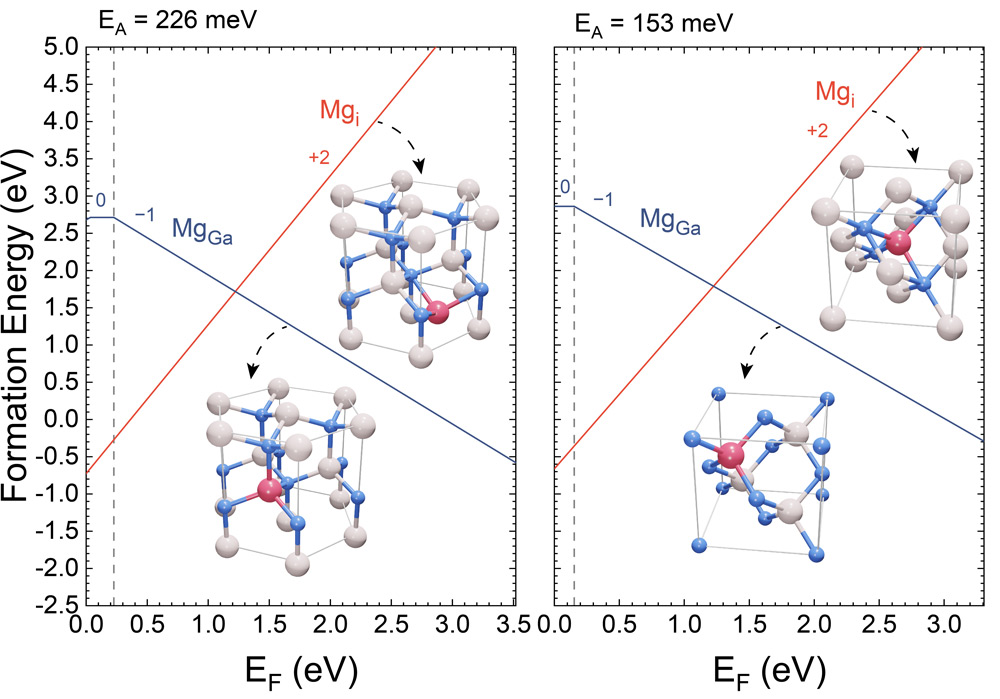News: Microelectronics
5 February 2021
Zincblende GaN promises fourfold higher hole concentrations than in wurtzite GaN
Achieving high n- and p-type doping in gallium nitride (GaN) materials is essential to increasing efficiency and power in solid-state lighting and RF/power electronics. The dopability of GaN is determined by the formation, activation and self-compensation of dopants, which depend on the bonding nature between dopants and GaN. GaN forms in wurtzite (wz-) and zincblende (zb-) phases. Yet, the knowledge of n- and p-type doping has been developed mostly on wz-GaN due to its stability and current industrial adaption.
Today, p-type doping of wz-GaN and their alloys remain challenging, particularly for reaching high (>1019cm-3) hole concentrations. The main factor in the p-doping limitation has been attributed to the large activation energies of common acceptors (e.g. Mg with an activation energy of ~ 250meV). Compared with the low (<30meV) activation energies of donors, this asymmetry between electron and hole concentrations limits the performance of GaN photonics (light-emitting diodes, laser diodes) and electronics (RF/power transistors).
University of Illinois at Urbana-Champaign (UIUC) researchers led by professor Bayram have used computational model to perform first-principles calculations in order to study the formation, activation and self–compensation of donors silicon (Si) and germanium (Ge) and acceptors carbon (C), beryllium (Be) and magnesium (Mg) in wz- and zb-GaN (Y.-C. Tsai and C. Bayram, Computational Materials Science 190 (2021) 110283).

Picture: Formation energies of MgGa (acceptor) and Mgi (double donor) in wz-GaN (left) and zb-GaN (right). The reference lines highlight the activation energies (EA).
The results reveal the impacts of symmetricity not only on the activation energies but also on the formation energies and self-compensation effects. Specifically, Mg activation energy is reduced to ~153meV in zb-GaN (compared with 226meV in wz-GaN). Also, vibrational analysis suggests that formation of the Mgi compensating donor is less favorable in zb-GaN than in wz-GaN (the formation energy of the Mg interstitial is higher in zb-GaN than in wz-GaN), since the higher symmetricity of the interstitial site in zb-GaN renders a much smaller vibrational entropy. The authors estimate that, compared with wz-GaN:Mg, fourfold higher hole concentration is achievable in zb-GaN:Mg at room temperature.
The researchers reckon that these results promise a bright future for zb- III-nitride research, particularly for bipolar devices.









